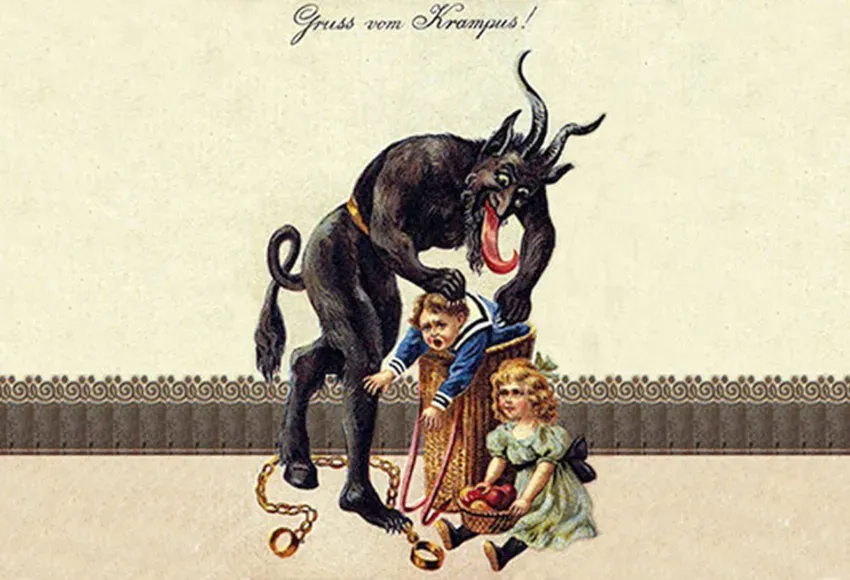While the good kids are hanging their stockings and making their Christmas lists, the bad kids are having all the fun. On Saturday, December 9, holiday horror legend Krampus paid a visit to some of Seattle's baddest.
The mythical demon made a special appearance at Broadway's New York Xchange, a modern alternative fashion shop. Patrons were given the opportunity to take a photo with Krampus after making their purchases at the small business. The event was a hit, even if Krampus was a bit of a diva, demanding a warm blanket and "hot choc-ey" in between photo sessions.
Sage Quintana was inspired to stop by the New York Xchange after spotting its posters for "Christmas photos with Krampus." Quintanna thought it would be a great image for their Christmas card with their partner. "I'm definitely a fan of Krampus," they said. "I love horror, so I love that there's a spooky aspect to Christmas."
"Meeting Krampus was so fun!" Quintana continued. "Their makeup and prosthetics were fantastic and so creepy. They couldn't say anything because of the makeup, but their demeanor was so chill and fun. They seemed to be having a really good time taking photos and would totally match your energy."
As old as Santa Claus
For those unfamiliar, Krampus is a legend as old as Santa Claus, originating in the alpine regions of Central and Eastern Europe. He is described as a tall, hairy creature with the cloven hooves and horns of a goat. Krampus is covered in dark hair and towers above the average man. His long forked tongue lolls out of his mouth like a hound dog, and everywhere he goes, he thrashes chains and a bundle of birch branches.
Folklore says that on the night of December 5, Krampus would come to town with Saint Nicholas. While the kindly old man would bring dried nuts and oranges to good children, Krampus would punish the ill-behaved with his bundle of branches. With 20 more days until Christmas, the naughty children would still have enough time to shape up before the 25th, but for those who didn't, Krampus would return.
Like the legend of Santa Claus, Krampus is thought to predate modern Christmas traditions, with origins dating back to pagan rituals. His name derives from the Germanic language, with a rough translation of "dead rotten."
Many fans of Krampus, like Quintana, admire the mythical creature's ties to pagan traditions. "Krampus is originally pagan, as are a lot of Christmas traditions that lots of people do today," they said. "My partner is pagan, so we like to celebrate those aspects during the holidays."
Controversy and mainstreaming
In modern times, his association with the winter holiday season has garnered controversy. In the 1930s, Krampus was banned in Austria. The rest of Europe followed suit and began distributing anti-Krampus propaganda, for fear the demonic creature might psychologically harm children.
Like many evil creatures, Krampus could not be destroyed by mere laws and pamphlets. He found his way to the United States, where, in the 1990s, he found acceptance in a rising punk scene. Video games, like 1998's CarnEvil, brought Krampus to the mainstream. In 2004, Monte Beauchamp published a collection of holiday cards, all featuring the horned demon. Pretty soon, Krampus began popping up everywhere, from television to film. In 2015, he even got a feature motion picture.
Today, Krampus is more than just a legend; he's a statement and a symbol to counterculture movements, and to some, an unlikely Queer ally.
"I feel like Krampus is one of those characters that doesn't necessarily start out as Queer, but we have come to love and identify with him, like we do with a lot of stereotypical 'villains,'" Quintana said.
Some interpret his presence as an alternative to the hypercapitalist version of Christmas widely accepted and celebrated around the world. To them, Krampus isn't evil, but fair. He evokes a sense of justice, and stands as a tall, hairy reminder that those filled with greed and selfish desires will eventually get what is coming to them.


